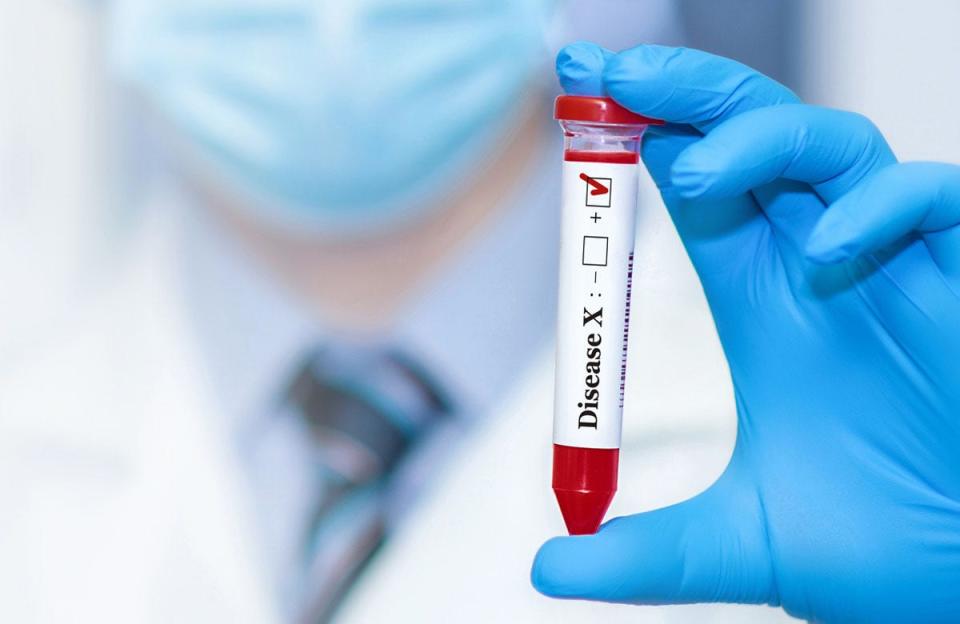What is Disease X, and why is it significant? Discuss its origins, challenges in predicting and preparing for it, and the measures required for effective global preparedness.
Disease X is a hypothetical concept introduced by the WHO in 2018, representing an unknown pathogen capable of causing a global epidemic or pandemic.
Significance:
It emphasizes preparedness for unforeseen outbreaks, such as COVID-19, which was considered the first real example of Disease X.
The concept highlights the need for rapid global response and medical innovation in the face of emerging threats.
Origins of the Concept
Historical Background:
Post the 2014–2016 West African Ebola epidemic, the WHO recognized gaps in global epidemic preparedness.
The Disease X concept was included in the WHO’s Blueprint for Priority Diseases to address threats that science had yet to encounter.
Inspiration:
Donald Rumsfeld’s matrix categorizes Disease X under “known unknowns” and “unknown unknowns,” signifying unpredictability in identifying when, where, or how it might arise.
Challenges in Predicting Disease X
Zoonotic Spillovers:
Over 70% of emerging diseases have zoonotic origins, often linked to deforestation, urbanization, and agriculture intensification.
Examples: SARS, MERS, Ebola, and HIV.
Environmental Factors:
Climate change expands the range of vector-borne diseases (e.g., malaria, dengue) and accelerates pathogen adaptation to new hosts.
Technological Gaps:
Despite advancements in genomic sequencing and AI, identifying and forecasting unknown pathogens remains complex.
An estimated 1.7 million viruses in wildlife could infect humans, yet only a fraction have been studied.
Other Risks:
Antimicrobial resistance, accidental lab leaks, or bioterrorism.
Patterns in Emerging Diseases
Epidemiological Observations:
Novel outbreaks have become more frequent since the mid-20th century due to increased human-wildlife interactions and globalization.
Regions like the Congo Basin, with high biodiversity and weak healthcare systems, are particularly vulnerable.
Measures for Preparedness
Strengthening Surveillance:
Robust systems for early detection of new outbreaks.
Utilization of genomic sequencing, AI, and real-time data sharing for diagnostics and vaccine development.
Healthcare Infrastructure:
Enhancing capacity in low- and middle-income countries.
Investment in healthcare workers and medical supplies.
Research and Innovation:
Development of prototype platforms for rapid response to unknown pathogens, such as those by CEPI.
Global Collaboration:
The WHO’s Pandemic Treaty aims to foster unified global responses.
Frameworks like the Nagoya Protocol ensure equitable sharing of genetic resources and benefits.
Lessons from COVID-19 and the Congo Outbreak
COVID-19 as Disease X:
Exemplified the unpredictability of a global health crisis and the need for preparedness.
Congo Outbreak (December 2024):
Highlights the ongoing risk of emerging diseases and the urgent need for global vigilance.
Call to Action
Equitable Resource Allocation:
Ensure fair access to diagnostics, treatments, and vaccines during crises.
Public Awareness and Policy Reform:
Educate populations on zoonotic risks and promote sustainable practices to reduce ecological disruptions.
Strengthening Research Collaboration:
Encourage data-sharing among nations to enhance outbreak detection and response strategies.
Disease X underscores the urgency of preparedness for an unpredictable pandemic. Strengthening healthcare systems, investing in research, and fostering global solidarity are imperative to mitigate the risks of the next health crisis. As the Congo outbreak reminds us, a disease emerging anywhere poses a threat everywhere, making proactive, collective action a necessity.
Source:

